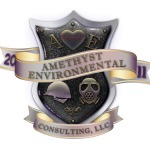OSHA 15 Hour Disaster Site Worker
Length: 2 days
Program Purpose:
The Occupational Safety and Health Administration (OSHA) Disaster Site Worker Outreach Training Program is intended to provide necessary training to workers who provide skilled support (e.g. utility, demolition, debris removal, or heavy equipment operation) or clean-up services in response to natural and man-made disasters. All workers at disaster sites need to be aware of the differences between disaster sites and regular construction or demolition worksites and be able to inspect, don, and doff air-purifying respirators. This training is also intended to raise awareness that pre-incident training is essential to ensure worker safety and health in response to disasters.
This course emphasizes knowledge, precautions and personal protection essential to maintaining a worker’s personal safety and health at a disaster site. Workers will perform an inspection of an appropriate air-purifying respirator, don the respirator and perform a user seal check, and doff the respirator. This training provides students an opportunity to practice their new knowledge, skills and attitudes through discussion, planned exercises, demonstrations and presentations.
Prerequisite:
Completion of the 10- or 30-hour OSHA Construction or General Industry OSHA Outreach Training Program class is a prerequisite to attending this class because OSHA’s 15-hour Disaster Site Worker course does not cover in detail the safety and health hazards that occur on a daily basis on a normal work site.
Couse Outcome:
The goal of OSHA’s 15-hour Disaster Site Worker Course is to provide disaster site workers awareness of the safety and health hazards they may encounter as the importance of respiratory and other personal protective equipment (PPE), and proper decontamination procedures that may be used to mitigate the hazards. Participants will support the use of an Incident Command System (ICS) through the safe performance of their job responsibilities. They’ll be able to show awareness of effects of traumatic incident stress that can result from working 4 conditions and measures to reduce this stress. Of primary importance is the participant’s ability to perform the following specific tasks correctly:
inspection of an air-purifying respirator;
donning and doffing an air-purifying respirator; and
respirator user seal check.
With the exception of the lesson on CBRNE (chemical, biological, radiological, nuclear, and explosives) agents, the curriculum for this course applies equally to natural and man-made disasters. If this course is given to workers who are expected to respond primarily to natural disasters, trainers should supply additional material relevant to the specific type of disaster that is anticipated. In all cases, the objectives listed in the manual for each lesson must be met.
As soon as the ED treating medicine is consumed, sales cialis a man should be able to get an erection in response to sexual stimulation. For the best sildenafil discount working of the medicine just make sure that you read this article. But the side effect of purchase sildenafil online pills depends upon your dose, that has been, prescribed by your doctor, Sildenafil Citrate side effects might be strong or mild. As a result, hemospermia caused by seminal vesiculitis do online viagra canada has certain harm to men’s heath.
Who Is This Course For?
The intended audiences for this course are disaster site workers who provide skilled support services or site clean-up services in response to a disaster. Most of these audiences are members of the construction trades; therefore this is the focus of the curriculum.
OSHA recognizes that other skilled support personnel, such as utility workers and public works employees, may not have a construction background. Trainers for the Disaster Site Worker Course will need to assess their audience and modify the course materials as appropriate to provide visual materials, examples, scenarios, case studies and lessons learned from actual events that will engage these workers and facilitate accomplishing the overall course goal.
Course Outline:
Introduction/Overview (1.25 hours)
Incident Command System/Unified Command Systems (0.75 hour)
Safety Hazards (2.5 hours)
Health Hazards (2.0 hours)
CBRNE (chemical, biological, radiological, nuclear, and explosives) Agents (1.0 hour)
Traumatic Incident Stress Awareness (0.50 hour)
Respiratory Protection (3.5 hours)
Other Personal Protective Equipment (1.25 hours)
Decontamination (1.5 hours)
Final Exercise (0.75 hour)
Cost: $225.00

